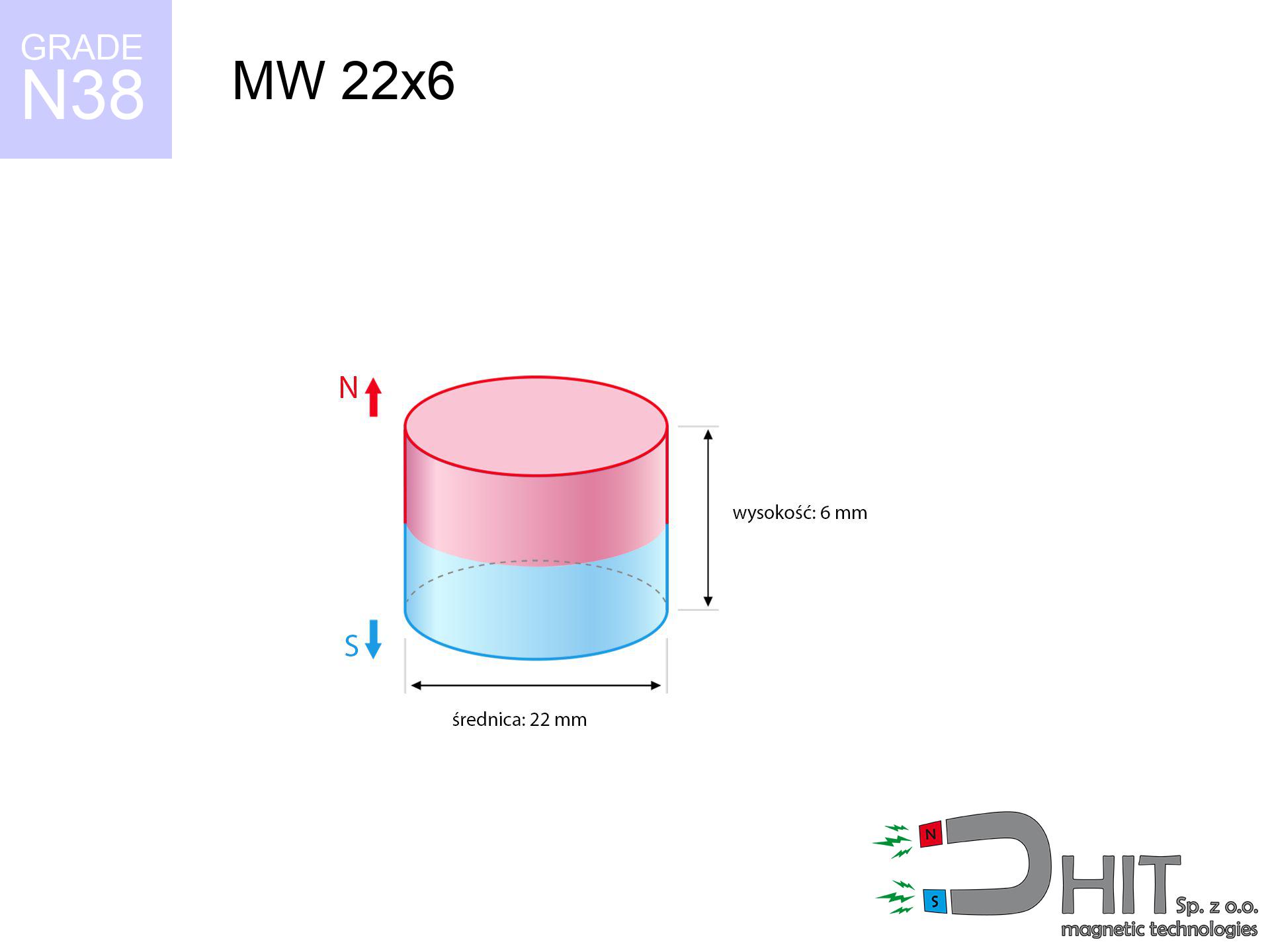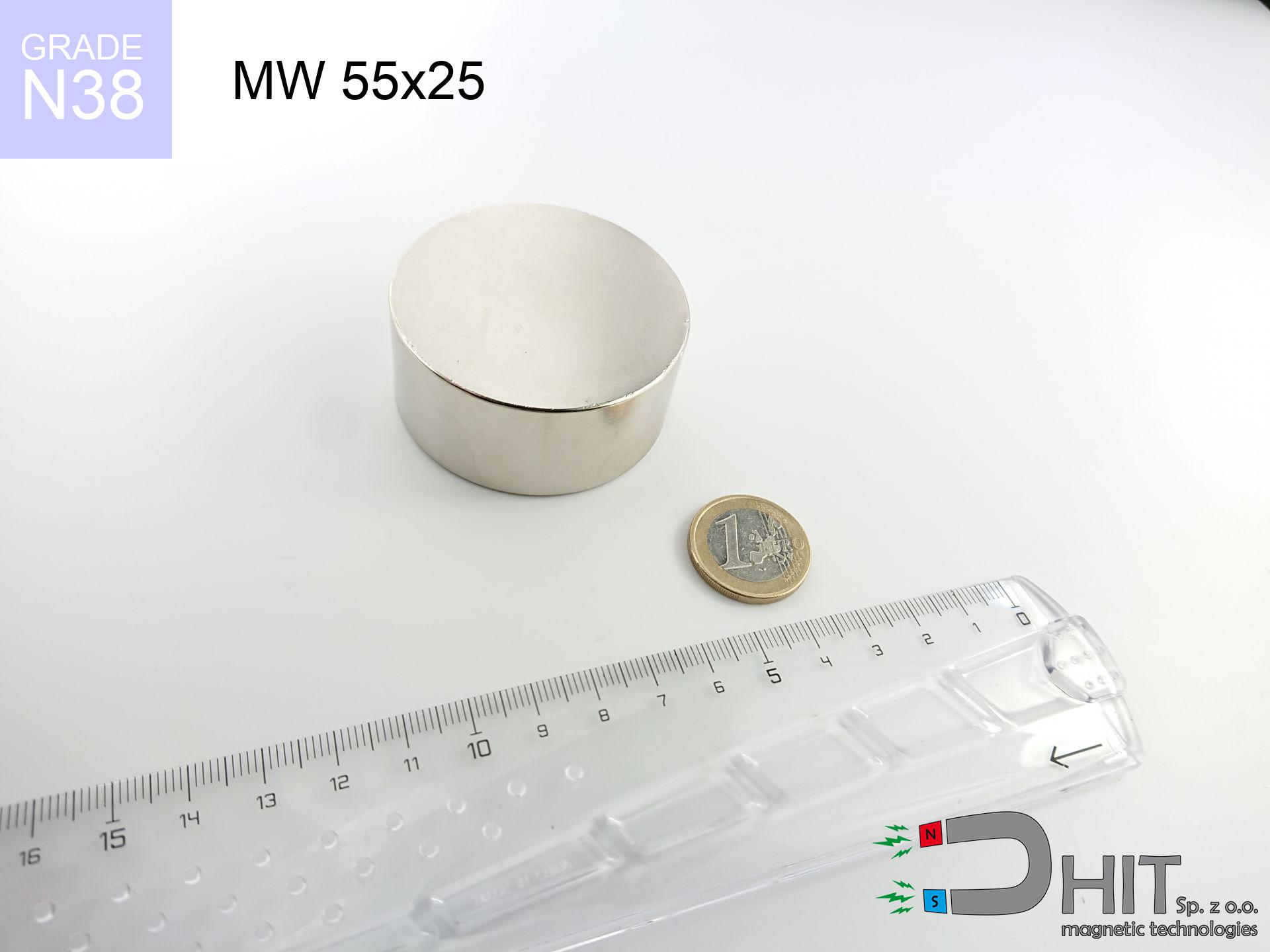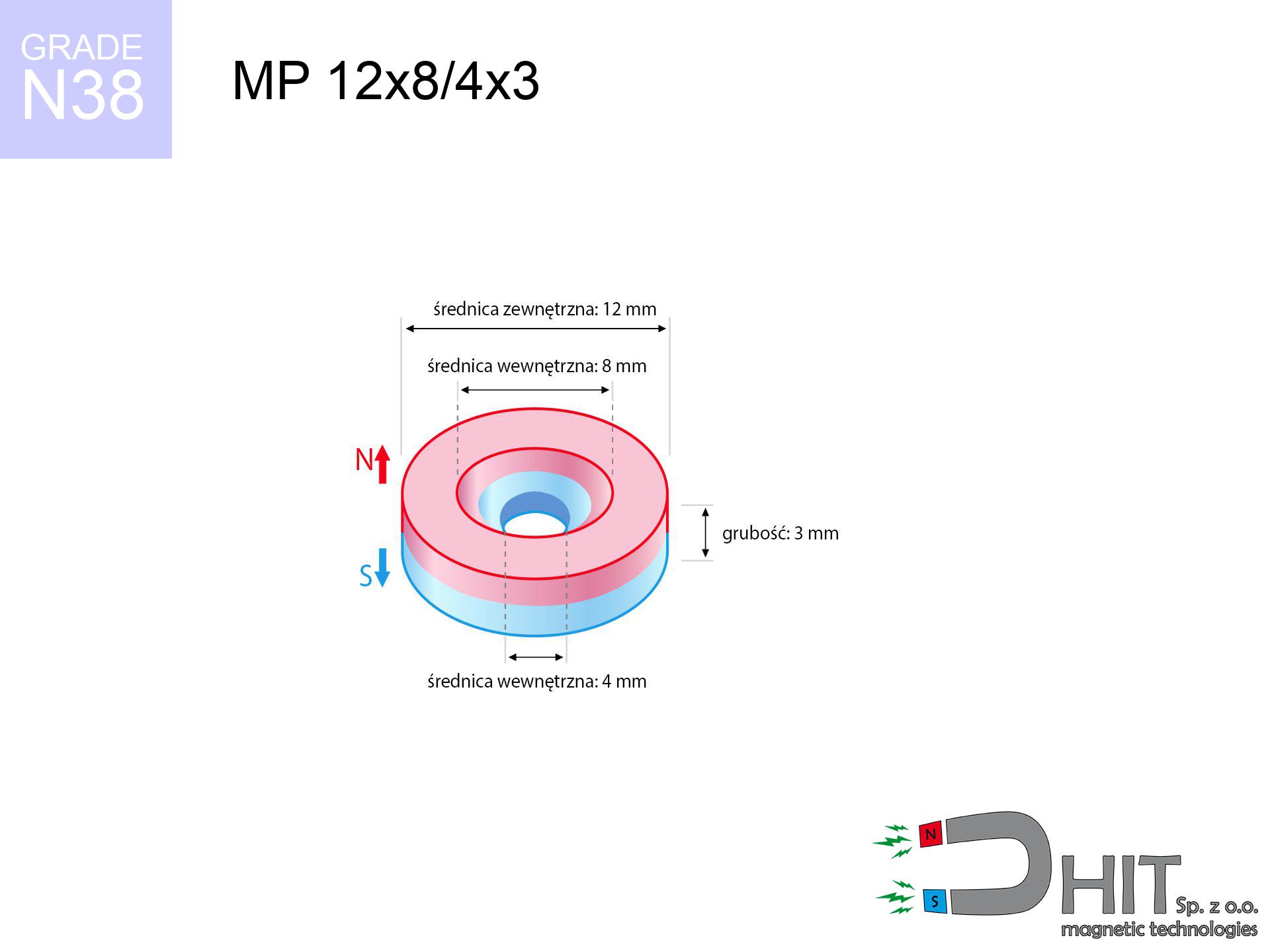MW 22x6 / N38 - cylindrical magnet
cylindrical magnet
Catalog no 010047
GTIN: 5906301810469
Diameter Ø [±0,1 mm]
22 mm
Height [±0,1 mm]
6 mm
Weight
17.11 g
Magnetization Direction
↑ axial
Load capacity
7.3 kg / 71.59 N
Magnetic Induction
296.78 mT
Coating
[NiCuNi] nickel
6.11 ZŁ with VAT / pcs + price for transport
4.97 ZŁ net + 23% VAT / pcs
bulk discounts:
Need more?Need advice?
Call us
+48 888 99 98 98
if you prefer drop us a message using
form
the contact section.
Weight along with appearance of magnetic components can be analyzed on our
magnetic mass calculator.
Orders placed before 14:00 will be shipped the same business day.
MW 22x6 / N38 - cylindrical magnet
Magnetic properties of material N38
Physical properties of NdFeB
Shopping tips
Moreover, even though neodymium is part of the strongest magnets, they are susceptible to corrosion in humid environments. For this reason, they are coated with a thin layer of silver to protect them from corrosion. Interestingly that NdFeB neodymium magnets are about 13% lighter than SmCo magnets and, despite their power, easily break, which requires care during their handling. Therefore, any mechanical processing should be done before they are magnetized.
In terms of safety, there are several recommendations regarding the use of these magnets. It is advisable to avoid their use in acidic, basic, organic environments or in solvents, and also in water or oil. Furthermore, they can distort data on magnetic cards and hard drives, although data deletion using a neodymium magnet is not always certain.
In terms of properties in different environments, neodymium magnets are susceptible to corrosion, especially in conditions of high humidity. Therefore, they are often covered with coatings, such as silver, to preserve them from external factors and prolong their durability. Temperatures exceeding 130°C can cause a reduction of their magnetic strength, although there are particular types of neodymium magnets that can tolerate temperatures up to 230°C.
As for dangers, it is important to avoid using neodymium magnets in acidic conditions, basic environments, organic or solvent environments, unless they are insulated. Additionally, their use is not recommended in wet conditions, oil, or in an atmosphere containing hydrogen, as they may lose their magnetic strength.
Advantages and disadvantages of neodymium magnets NdFeB.
In addition to their long-term stability, neodymium magnets provide the following advantages:
- Their strength remains stable, and after around ten years, it drops only by ~1% (according to research),
- They protect against demagnetization induced by surrounding magnetic influence remarkably well,
- The use of a mirror-like nickel surface provides a smooth finish,
- Magnetic induction on the surface of these magnets is impressively powerful,
- Neodymium magnets are known for exceptionally strong magnetic induction and the ability to work at temperatures up to 230°C or higher (depending on the magnetic form),
- With the option for fine forming and precise design, these magnets can be produced in multiple shapes and sizes, greatly improving design adaptation,
- Significant impact in cutting-edge sectors – they are used in data storage devices, electric motors, diagnostic apparatus as well as high-tech tools,
- Compactness – despite their small size, they deliver powerful magnetism, making them ideal for precision applications
Disadvantages of neodymium magnets:
- They are fragile when subjected to a sudden impact. If the magnets are exposed to external force, we recommend in a metal holder. The steel housing, in the form of a holder, protects the magnet from damage and additionally enhances its overall durability,
- Magnets lose pulling force when exposed to temperatures exceeding 80°C. In most cases, this leads to irreversible performance loss (influenced by the magnet’s profile). To address this, we provide [AH] models with superior thermal resistance, able to operate even at 230°C or more,
- They rust in a damp environment, especially when used outside, we recommend using sealed magnets, such as those made of plastic,
- The use of a protective casing or external holder is recommended, since machining fine details in neodymium magnets is risky,
- Health risk linked to microscopic shards may arise, if ingested accidentally, which is crucial in the context of child safety. Furthermore, tiny components from these assemblies have the potential to interfere with diagnostics once in the system,
- In cases of tight budgets, neodymium magnet cost may not be economically viable,
Detachment force of the magnet in optimal conditions – what it depends on?
The given pulling force of the magnet represents the maximum force, determined under optimal conditions, namely:
- with the use of low-carbon steel plate serving as a magnetic yoke
- having a thickness of no less than 10 millimeters
- with a polished side
- with no separation
- with vertical force applied
- in normal thermal conditions
Lifting capacity in practice – influencing factors
In practice, the holding capacity of a magnet is conditioned by these factors, from crucial to less important:
- Air gap between the magnet and the plate, because even a very small distance (e.g. 0.5 mm) can cause a drop in lifting force of up to 50%.
- Direction of applied force, because the maximum lifting capacity is achieved under perpendicular application. The force required to slide the magnet along the plate is usually several times lower.
- Thickness of the plate, as a plate that is too thin causes part of the magnetic flux not to be used and to remain wasted in the air.
- Material of the plate, because higher carbon content lowers holding force, while higher iron content increases it. The best choice is steel with high magnetic permeability and high saturation induction.
- Surface of the plate, because the more smooth and polished it is, the better the contact and consequently the greater the magnetic saturation.
- Operating temperature, since all permanent magnets have a negative temperature coefficient. This means that at high temperatures they are weaker, while at sub-zero temperatures they become slightly stronger.
* Lifting capacity testing was conducted on plates with a smooth surface of suitable thickness, under a perpendicular pulling force, however under attempts to slide the magnet the lifting capacity is smaller. Additionally, even a minimal clearance {between} the magnet and the plate reduces the holding force.
Caution with Neodymium Magnets
It is essential to maintain neodymium magnets out of reach from children.
Neodymium magnets are not toys. Be cautious and make sure no child plays with them. In the case of swallowing multiple magnets simultaneously, they can attract to each other through the intestinal walls. In the worst case scenario, this can lead to death.
Neodymium magnetic are particularly delicate, which leads to their breakage.
In the event of a collision between two neodymium magnets, it can result in them getting chipped. Despite being made of metal as well as coated with a shiny nickel plating, they are not as hard as steel. In the case of a collision between two magnets, there can be a scattering of small sharp metal fragments in different directions. Protecting your eyes is essential.
People with pacemakers are advised to avoid neodymium magnets.
Neodymium magnets generate very strong magnetic fields that can interfere with the operation of a pacemaker. This is because many of these devices are equipped with a function that deactivates the device in a magnetic field.
Dust and powder from neodymium magnets are flammable.
Avoid drilling or mechanical processing of neodymium magnets. Once crushed into fine powder or dust, this material becomes highly flammable.
The magnet coating contains nickel, so be cautious if you have a nickel allergy.
Studies show a small percentage of people have allergies to certain metals, including nickel. An allergic reaction often manifests as skin redness and rash. If you have a nickel allergy, try wearing gloves or avoid direct contact with nickel-plated neodymium magnets.
Neodymium magnets are the most powerful, most remarkable magnets on the planet, and the surprising force between them can surprise you at first.
Read the information on our website on how to properly utilize neodymium magnets and avoid significant harm to your body and unintentional disruption to the magnets.
Neodymium magnets can attract to each other, pinch the skin, and cause significant injuries.
Magnets will attract each other within a distance of several to about 10 cm from each other. Don't put your fingers in the path of magnet attraction, as a serious injury may occur. Magnets, depending on their size, can even cut off a finger or alternatively there can be a significant pressure or a fracture.
Never bring neodymium magnets close to a phone and GPS.
Neodymium magnets produce strong magnetic fields that interfere with magnetometers and compasses used in navigation, as well as internal compasses of smartphones and GPS devices.
Neodymium magnets can become demagnetized at high temperatures.
Even though magnets have been found to maintain their efficacy up to temperatures of 80°C or 175°F, it's essential to consider that this threshold may fluctuate depending on the magnet's type, configuration, and intended usage.
Under no circumstances should neodymium magnets be placed near a computer HDD, TV, and wallet.
The strong magnetic field generated by neodymium magnets can destroy magnetic media such as floppy disks, video tapes, HDDs, credit cards, magnetic ID cards, cassette tapes, or other devices. They can also damage devices like video players, televisions, CRT computer monitors. Remember not to place neodymium magnets close to these electronic devices.
Be careful!
In order for you to know how powerful neodymium magnets are and why they are so dangerous, see the article - Dangerous very strong neodymium magnets.





![SM 32x200 [2xM8] / N52 - magnetic separator SM 32x200 [2xM8] / N52 - magnetic separator](https://cdn3.dhit.pl/graphics/products/sm-32x200-2xm8-tus.jpg)



